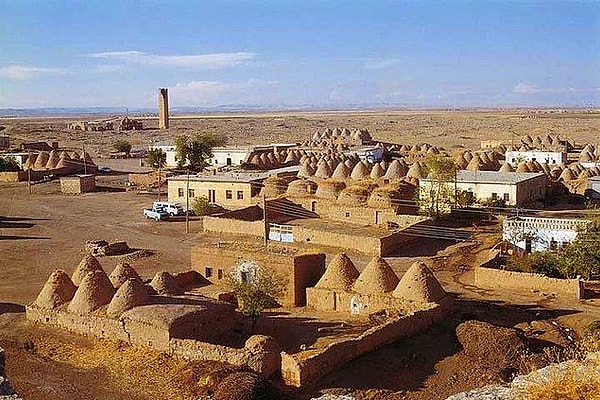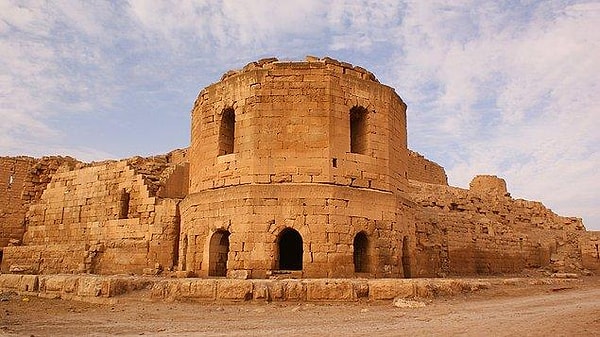With its Mesopotamian structures, Islamic artifacts and multicultural structure, Harran is one of the special places in the Southeast waiting to be discovered. The fact that the world's oldest Islamic university is located in Harran and that some of the prophets spent part of their lives here are features that arouse curiosity to see Harran. Harran, which is called 'Harana' in Akkadian language, means 'road and caravan'. Harran, which is also mentioned in the holy books, is a very important city in both pagan and celestial religions. So, how much do you know about Harran, where you will find traces of Anatolian civilizations wherever you turn your head? Let's discover Harran, the fairytale city that unites Mesopotamia and the Mediterranean together!
Harran Travel Guide: Uncovering the Secrets of Mesopotamia's Fairytale City

Kümbet Houses

One of the first symbols that come to mind when it comes to Harran is the kümbet houses. The houses, which attract attention with their conical structure, are still standing today although they were built 150-200 years ago. Rose oil, egg white, adobe and straw were used in the mortar of the structures plastered with mud inside and outside. The most prominent feature of the houses is that they are cool in summer and warm in winter. Declared in 1979 as a natural protected area, the houses are visited by many local and foreign tourists. If you go to see Harran, you can wear local clothes and take plenty of photos for your social media. You can sit on the chairs placed around the stone table set up in the courtyard and take a water break from the scorching sun.
Harran Castle

Located in the south of the city, the castle is divided into two parts: the inner castle and the lower city wall. The walls in the outer castle, called the lower city wall, are 4 meters wide and 5 meters long. Although there are some collapses on the walls, it has managed to survive in all its splendor. According to some researchers, there are 150 rooms in the castle, which has three floors, but not all of the rooms have survived to the present day. As a result of the joint Turkish-British excavations, a gate with lion reliefs and an Arabic inscription was unearthed in the eastern part of the castle.
Historical Harran University
As strange as it may sound, Harran is home to one of the oldest universities in the world. Unfortunately, the building, where famous names in mathematics, physics, philosophy and astronomy gave lectures, has not survived to the present day. The famous mathematician and doctor Sabit bin Qurra, Battani and Jabir bin Hayyan are some of the most famous academics. One cannot help but envy the life far away from scientific thought in medieval Europe during this period.
Sin Temple
A Mesopotamian city with such an ancient history cannot be imagined without a temple. During the Mitannid period, people worshipped Sin, the Moon God, for thousands of years. The last temple in Harran, which preserved its pagan culture for many years, was destroyed in 1081. The people of Harran attached great significance to the beings who mediated between humans and gods, and believed that the Moon God Sin spread love, brotherhood, knowledge and goodness among people.
Bazda Caves
Bazda Caves, located 19 kilometers north of Harran and 19 kilometers from the district, has a history of 2 thousand years dating back to the Roman period. The stones taken from the caves to meet the stone needs of the region have formed grooves and galleries of 10-15 meters in length over time. The ancient city of Shuayb and Khan al-Barur Caravanserai, located around the caves, were probably built with stones taken from the caves.
Harran Grand Mosque
Also known as the Cennet Mosque and Cuma Mosque, it is the first mosque in Anatolia to have a courtyard, portico and fountain. Built on the Sin Temple during the Umayyad period, the mosque has survived to the present day after a comprehensive restoration in 1174. Built on the slopes of the Harran mound, the mosque draws attention with its stone work and decorations.
Khan al-Barur Caravansary
You cannot imagine any historical city established in Anatolia without a caravansary. The caravansary, where trade activities were carried out between Mesopotamia and Anatolia, belongs to the Ayyubid period. There are two inscriptions on the north and west of the caravansary. From the word 'barur', which means goat droppings in Arabic, you must have understood that this place was used as a barn for many years. While you go to see the caravansary built on a flat area, don't forget to visit the Shuayb Ruins, the nearby caves and the Harran Mound.

